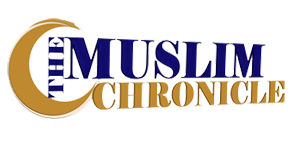Scan it for an assessment of cancer risk
Experts urge caution on popular \'skin rash\' apps

A dermatologist examines a patient
London - Arab Today
A dermatologist examines a patient
More than 200 mobile apps for diagnosing skin rashes and moles are now on the market, and US researchers Wednesday urged caution in relying on them over a doctor\'s advice. Their names include
attention-grabbers like \"What\'s My Rash?\" and \"iSore.\"
Over half of the 229 apps studied are mainly targeted at consumers and patients, but only a few were clearly designed by medical personnel, said the study in the Journal of the American Medical Association (JAMA) Dermatology.
Some describe acne, rosacea, psoriasis or eczema in pictures and text. Others give recommendations on a sunscreen based on a user\'s skin type and the current weather conditions.
Of particular concern are those that allow the user to take a picture of a suspicious spot and scan it for an assessment of cancer risk, researchers said.
\"Several smartphone applications that evaluate photographs of skin lesions and provide a malignancy risk assessment have demonstrated highly variable diagnostic accuracy,\" said the study.
Previous research has shown that these tests\' sensitivity ranged from nearly seven to 98 percent, it noted.
One study sent pictures of malignant melanomas through an app, and found the device described 88 percent of them as \"medium-risk.\" It wrongly advised users to simply monitor the lesions.
\"The diagnostic inaccuracies of these apps may harm patients who substitute these relatively inexpensive tools for in-person medical care, by potentially delaying treatment for melanoma,\" said the JAMA study.
Just how popular the apps are with the public is unclear, since the number of downloads may not accurately reflect the number of people who actually use the apps regularly.
The 10 most reviewed apps were Ultraviolet-UV Index, VisualDx, SPF, iSore, SpotMole, Pocket Derm, Skin Scan, Doctor Mole, What\'s My Rash? and Skin Conditions.
Researchers found that the top three had nearly 800 reviews combined, which may provide a \"rough reflection of app use\" though likely a \"sizable underestimation,\" said the study.
More than half were free, and the average cost for a paid app was $2.99.
On the upside, researchers said that technology is improving, allowing for more accurate pictures that may be forwarded via smartphones to a medical professional, and offering new inroads to treating people in remote and underserved areas.
The US Food and Drug Administration announced earlier this week it would not regulate most mobile health apps, unless they serve medical purposes such as calculating radiation dosage for a cancer patient, measuring blood pressure or sending real-time electrocardiographs to a doctor.
Those who download the apps should not follow their advice over that of a doctor, said the JAMA study.
\"Patients and clinicians should maintain a healthy sense of skepticism because studies regarding the safety and accuracy of such apps are limited,\" it said.
The study was conducted by researchers at the University of Arizona, University of Colorado, University of Washington, University of Pittsburgh, Department of Veterans Affairs Medical Center in Denver and the Colorado School of Public Health.
Source: AFP
GMT 08:36 2018 Tuesday ,23 January
Sanofi buys US haemophilia treatment firmGMT 09:49 2018 Monday ,22 January
Health sector reforms remove capacity constrainsGMT 06:46 2018 Friday ,19 January
Rising Yemen currency sparks hope of relief for millionsGMT 12:34 2018 Tuesday ,16 January
On Obstetrics, Gynecology and Infertility begins tomorrowGMT 07:45 2018 Sunday ,14 January
'Hundreds' of lawsuits filed over Lactalis salmonellaGMT 11:08 2018 Friday ,12 January
Philippines: deaths in vaccine row 'consistent with' dengueGMT 09:28 2018 Wednesday ,10 January
Trump marijuana policy reversal stokes fearsGMT 09:35 2018 Monday ,08 January
Trump marijuana policy reversal stokes fears

In The Swiss Alps
Five things to know about Davos
Davos - Muslimchronicle
With the World Economic Forum kicking off in earnest on Tuesday, AFP presents a guide to the week-long event in the Swiss Alps. - WHAT IS ‘DAVOS‘? - Davos is shorthand forfighting hate speech
Instagram, Google+ join EU group
Brussels - Muslimchronicle
Facebook's Instagram and the Google+ social network have agreed to join an EU-sponsored group of US internet giants to combat online extremism, EU officials said Friday. EU officials added that
At Sports Court
Russians challenge doping ban
Geneva - Muslimchronicle
Dozens of Russian athletes banned by the International Olympic Committee for life over doping began an appeal against their suspension on Monday at the world's top sports court. The week-long hearing at the Court of Arbitration for Sport (CAS) includesIn New Aid For War-Torn Yemen
Saudi-led coalition announces $1.5bn
Sanaa - Muslimchronicle
The Saudi-led coalition fighting in Yemen has pledged $1.5bn (£1.1bn) in new humanitarian aid for the country. It will also increase the capacities of Yemeni ports to receive aid and cargo shipments, and set up 17 "safe-passage corridors" for humanitarian groups. ThreeParis show pays homage
To 'eternal style' of late Alaia
Paris - Muslimchronicle
Two months after legendary designer Azzedine Alaia's sudden death plunged the fashion world into mourning, an exhibition in homage to the "King of Cling" opened Monday in his studios in Paris. The Tunisian-born designer, renowned for the way his clothes hugged the body, died suddenly in November aged 82, reportedly of heart failure after falling down the stairs at his home. The diminutive maverick, who ignored fashion week convention by showing when and where he wanted, in July produced his first couture collection in six years to rapturous reviews. Now some of his most iconic dresses are going on display in the glass-roofed gallery next to his studio and home in the Marais district where he used to show his creations. It includes the dress worn by supermodel Naomi Campbell, his longtime friend and muse, when she led hisMaintained and developed by Arabs Today Group SAL.
All rights reserved to Arab Today Media Group 2023 ©
Maintained and developed by Arabs Today Group SAL.
All rights reserved to Arab Today Media Group 2023 ©


















